There are many opportunities to become a citizen scientist in national parks. Check out some park-sponsored projects below. You can find additional projects on external sites like SciStarter.com and CitizenScience.gov. And if you already use programs like eBird* or iNaturalist*, you can continue to do so in any national park, even on your own.
What can you do as a citizen scientist in a national park? Most likely you’ll collect data and upload them to a database. In some cases you can explore, graph, and analyze data. If the project is new, you may be able to make suggestions about study design or procedures. In all cases, you will learn and experience real science. And you'll do it in the places you love.
What can you do as a citizen scientist in a national park? Most likely you’ll collect data and upload them to a database. In some cases you can explore, graph, and analyze data. If the project is new, you may be able to make suggestions about study design or procedures. In all cases, you will learn and experience real science. And you'll do it in the places you love.
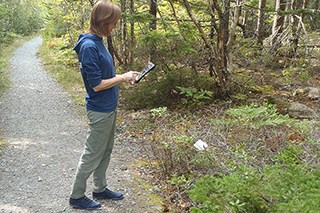
NPS Photo
Acadia National Park (ME) Sundew Phenology Trail
- Purpose: Monitor phenology (seasonal timing) of trees, plants, and shrubs in coastal Maine to help the park understand long-term trends.
- Activities: Use Nature's Notebook mobile app to record and upload phenological stages of specific plants.
- Location & Timing: Participate in the park; spring, summer and fall every year.
- Requirements: Anyone can participate, young children should be supervised by adults; training is provided.
- To Participate: Groups enroll in park’s residential education programming; individuals enroll in park’s public programs.
- More Information: Email park coordinator
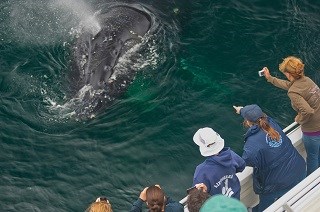
Bob Perry
Channel Islands National Park (CA) Whale Alert Monitoring Project
- Purpose: Monitor endangered whales to help the park and Channel Islands National Marine Sanctuary prevent whale ship strikes and entanglement.
- Activities: Record observations of marine mammals using the mobile app Whale Alert.
- Location & Timing: Participate in the park and marine sanctuary, year-round.
- Requirements: Anyone can participate, no special training is required. Participants need a mobile device.
- To Participate: See the project website to download the data collection form and instructions to your mobile device.
- More Information: Project website
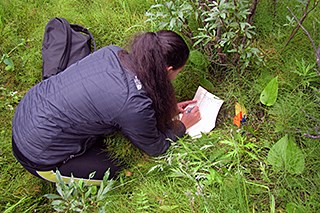
NPS Photo
Denali National Park and Preserve (AK) Snowshoe Hare Pellet Plot Project
- Purpose: Estimate the population density of snowshoe hares on an annual basis.
- Activities: Volunteers count snowshoe hare fecal pellets at established plots within the park.
- Location & Timing: Participate in the park; June-August every year.
- Requirements: Must be a teen or adult, or part of a school/organization group; training is provided. Volunteers must be able to take moderate hikes in the backcountry, spend time on hands and knees, and follow verbal instructions.
- To Participate: Email to express interest.
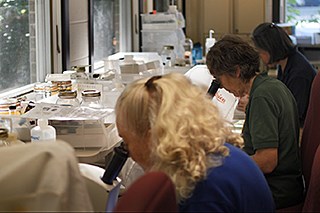
NPS Photo
George Washington Memorial Parkway (DC/MD/VA) All Taxa Biodiversity Inventory
- Purpose: Document all species found at George Washington Memorial Parkway so park managers understand what lives there.
- Activities: Use laboratory facilities to sort insects captured in traps along the parkway.
- Location & Timing: Participate in the park, year-round.
- Requirements: Must be a teen or adult to participate; training is provided.
- To Participate: Email to express interest.
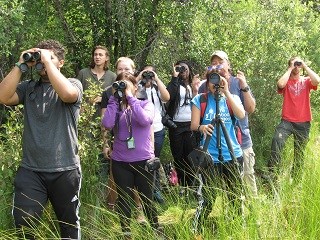
NPS Photo
Glacier National Park (MT) Common Loon Citizen Science Program
- Purpose: Monitor Common Loons to determine nesting success, locate causes of disturbance, and document population changes on lakes throughout the park.
- Activities: Participants visit lakes, complete a one hour observation, and use a mobile app (Survey 123) to record their observations.
- Location & Timing: Participate in the park, May through September
- Requirements: School or organizational groups, adults, teens, young children with adults can participate. Bird identification skill is helpful but not necessary.
- To Participate: Email the project coordinator
- More Information: Project website
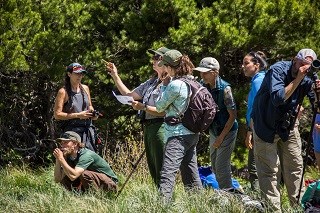
NPS Photo
Glacier National Park (MT) High Country Citizen Science Project
- Purpose: Monitor mountain goats, bighorn sheep, and pikas to provide information needed for prioritizing habitat preservation and guiding infrastructure development and visitor use.
- Activities: Hike in Glacier's high country to count mountain goats and bighorn sheep with a mobile app (Survey123), collect fecal pellets for genetic analysis, or document the presence or absence of pikas.
- Location & Timing: Participate in the park, May through October. Fecal pellets can be collected year-round.
- Requirements: School or organizational groups, adults, teens, young children with adults can participate. Participants must be able to hike at high elevation and pay attention to detail.
- To Participate: Email the project coordinator
- More Information: Project website
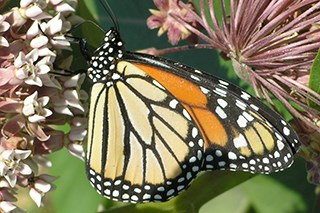
NPS Photo
Grand Canyon National Park (AZ) Western Monarch Milkweed Mapper
- Purpose: Map and better understand monarch butterflies and their host plants across the Western U.S.
- Activities: Report sightings of monarchs and milkweed with location, date, photos, etc. through an online mapping tool.
- Location & Timing: Participate in the park or remotely (online); year-round.
- Requirements: Anyone can participate. Volunteers should have the ability to identify monarch and milkweed species.
- To Participate: Set up an account on the project website.
- More Information: Project website
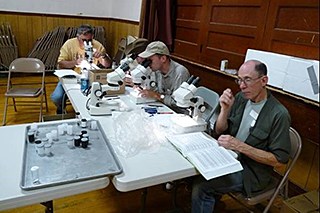
NPS Photo
Great Basin National Park (NV) BioBlitz
- Purpose: Find and identify species to help the park understand biodiversity.
- Activities: Collect and photograph organisms and upload images to the mobile app iNaturalist.
- Location & Timing: Participate in the park or remotely (online). Annual 2-day event.
- Requirements: Anyone interested in the outdoors can participate; training is provided.
- To Participate: Email to be notified of each year’s event.
- More Information: Project article
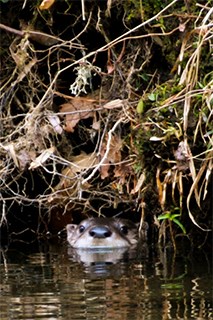
Photo courtesy of Logan Rosenberg
Great Smoky Mountains National Park (NC/TN) Otter Spotter
- Purpose: Monitor the distribution and activities of reintroduced river otters.
- Activities: Use the mobile app iNaturalist to report otters or otter sign throughout the park.
- Location & Timing: Participate in the park; year-round.
- Requirements: Anyone can participate, young children should be supervised by adults. Participants should be familiar with the iNaturalist mobile app; guidance is available on the project website.
- To Participate: Create an iNaturalist account and join the project, or see the project website.
- More Information: Project website or email
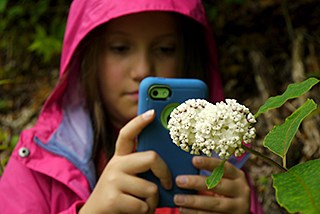
Photo courtesy of DLIA
Great Smoky Mountains National Park (NC/TN) Species SnapIt & MapIt
- Purpose: Help scientists and managers understand the distributions of species in the park.
- Activities: Use the iNaturalist mobile app to upload geo-tagged photographs of species as part of the Atlas of the Smokies project.
- Location & Timing: Participate in the park; year-round.
- Requirements: Anyone can participate, young children should be supervised by adults. Some knowledge of local plants and animals is helpful, but not required.
- To Participate: Follow directions on the project website. It’s best to do so before arriving in the park, since cell service may be unreliable.
- More Information: Project website or email
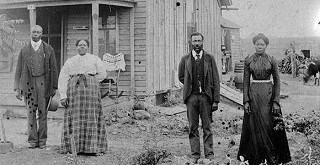
Library of Congress: Prints & Photographs Division, HABS KANS,33-NICO,1–6
Homestead National Historical Park (NE) Black Homesteading Project
- Purpose: Reveal the history of Black homesteaders who obtained titles for about 650,000 acres of prairie land from the General Land Office in the 1870s-1930s.
- Activities: Online volunteers will transcribe original historical documents into digital formats so they can be shared with scholars and the public worldwide.
- Location & Timing: Online, no time restrictions
- Requirements: Stable internet connection. Open to adults, teens, and families.
- To Participate: Please sign up through the Federal Government's volunteer page: Volunteer Opportunity Detail
- More Information: Email Volunteer Coordinator
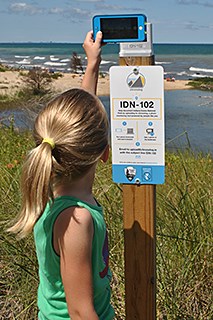
NPS Photo
Indiana Dunes National Park (IN) Chronolog Environmental Monitoring
- Purpose: Use repeat photographs to help park staff evaluate habitat protection and restoration projects.
- Activities: Use a smartphone to take and email photographs at designated locations; automatically receive a reply with a description and time-lapse photo series of each location.
- Location & Timing: Participate in the park or remotely (online); year-round.
- Requirements: Anyone can participate, young children should be supervised by adults. Participants use their own phone cameras.
- To Participate: Visit the official locations and follow directions for each, as listed on the project website.
- More Information: Project website or email the park coordinator
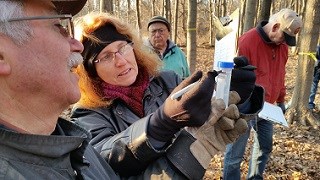
NPS Photo
Indiana Dunes National Park (IN) Climate Effects on the Culture and Ecology of Sugar Maples
- Purpose: Understand how climate is likely to impact sugar maple trees and sugar production so the park can interpret this in its public programming.
- Activities: Weigh and determine the sugar content of sap from trees at least once a week.
- Location & Timing: Participate in the park, late January through mid-March.
- Requirements: Anyone can participate, young children should be supervised by adults. Some reading and writing is necessary.
- To Participate: To sign up, visit the project website.
- More Information: Project website
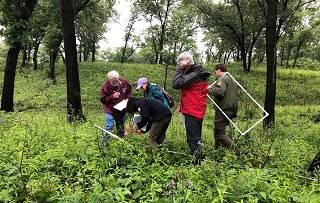
NPS Photo
Indiana Dunes National Park (IN) Integrated Monarch Monitoring Project
- Purpose: Monitor monarch butterflies and evaluate habitats to inform conservation efforts.
- Activities: Use a mobile app (Survey123) or data sheet to record blooming plants, monarch eggs and larvae, and adult monarchs during their life cycle.
- Location & Timing: Participate in the park, April through early October.
- Requirements: Adults and teens can participate. Some reading and writing is required, and partcipants need to traverse rolling, vegetated sand dunes, and climb over obstacles.
- To Participate: Email the project coordinator.
- More Information: Project website
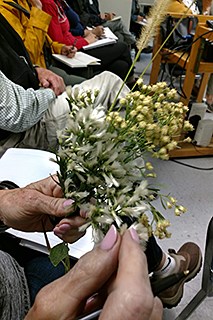
Jean Lafitte National Historical Park and Preserve (LA) Phenology Monitoring
- Purpose: Monitor seasonal changes (phenology) of plants and animals to help the park understand impacts of climate change and develop management strategies.
- Activities: Record phenological phases of plants and some animals using the mobile app Nature’s Notebook, or a field journal with subsequent computer data entry.
- Location & Timing: Participate in the park, year-round.
- Requirements: Must be a teen or adult, or part of a school/organization group; training is provided.
- To Participate: If you are new to phenology monitoring, email to indicate your interest. If you already monitor phenology elsewhere using Nature's Notebook, add the Jean Lafitte NHPP sites to your account.
- More Information: Project website
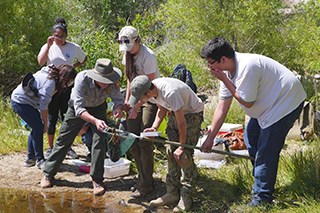
NPS Photo
National/Multi-Park Dragonfly Mercury Project
- Purpose: Monitor mercury concentrations in over 100 parks across the country, identify factors that influence mercury distribution, and help managers protect human and wildlife health.
- Activities: Wade in shallow water with park staff to collect, measure, and identify aquatic dragonfly larvae that will be tested for mercury by analytical laboratories.
- Location & Timing: Participate in parks during the spring, summer, and fall. See a map of participating parks.
- Requirements: Anyone can participate, young children should be supervised by adults. Training is provided. Participants should have an interest in invertebrates and identifying aquatic species, but no prior knowledge or experience is required.
- To Participate: Email the project coordinator or contact a park of interest to see when they host sampling events.
- More Information: Project website
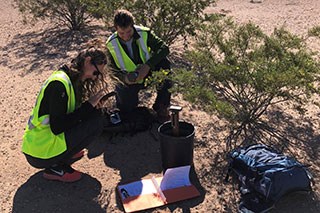
National/Multi-Park Terrestrial Mammal Monitoring Program
- Purpose: track biologically significant changes at the community and population levels of terrestrial mammals.
- Activities: Deploy wildlife cameras at remote locations throughout Chiricahua National Monument, Organ Pipe Cactus National Monument, and Saguaro National Park. Cameras are left for one month and then retrieved.
- Location & Timing: Wildlife camera deployments and retrievals take place annually January - June.
- Requirements: Teenagers and adults can participate; training is provided. The fieldwork is remote, strenuous, and can occur in varied and extreme weather conditions. Participants must be comfortable working under these circumstances and able to hike long distances. Overnight camping is often required.
- To Participate: Email the program’s coordinator. Only a limited number of participants are accepted - typically local residents who can volunteer for longer periods of time
- More Information: Project article
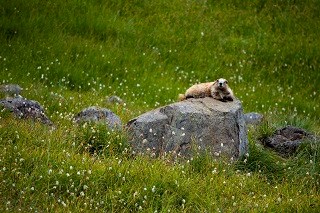
Olympic National Park (WA) Olympic Marmot Monitoring Project
- Purpose: Monitor population trends of the Olympic Marmot to inform park managers of this endemic species that is threatened by climate change.
- Activities: Hike to marmot habitat patches and survey areas for signs of current and past marmot presence (occupancy). Record data in field notebook and GPS units.
- Location & Timing: High elevation areas park-wide, both in the wilderness and in some road-accessible sites. Volunteers sign up for trips to specific survey areas. Trip length varies from 3-8 days and occur in August and early September.
- Requirements: Participants must be able to hike 2 -12 miles a day. Most surveys require participants to backpack and camp overnight at survey sites. Participants must also attend a day-long training prior to participating and sign up as part of a group of 2-6 people.
- To Participate: Participants must apply in advance. Check out the project’s website to see if this is a good fit for you. If so, follow the “How to Volunteer” directions and review all background information, trip descriptions, and project video before submitting a completed application form
- More Information: Project website
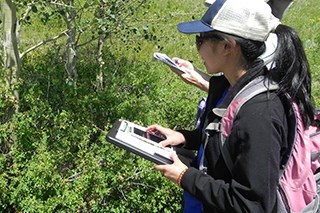
NPS Photo
Rocky Mountain National Park (CO) Lily Lake Phenology Project
- Purpose: Monitor seasonal changes (phenology) of plants and animals at Lily Lake to help the park understand long-term trends.
- Activities: Record observations of plants and animals using the mobile app Survey 123.
- Location & Timing: Participate in the park, year-round. Best opportunities are April-October.
- Requirements: Anyone can participate, no special training is required. Participants need a mobile device.
- To Participate: See the project website to download the data collection form and instructions to your mobile device.
- More Information: Project website or email the park coordinator
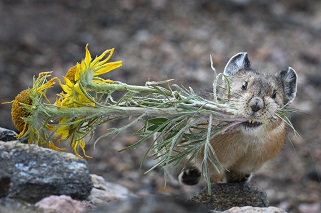
Photo Courtesy of Kristi Odom
Rocky Mountain National Park (CO) Pika Patrol
- Purpose: To determine the status of the American pika in Colorado and better understand the impacts of climate change on pikas and the alpine ecosystem they call home.
- Activities: Record pika presence, signs, and environmental observations.
- Location & Timing: Conduct pika surveys at long-term monitoring sites in Rocky Mountain National Park (RMNP) during summer (June - Sept) and/or use the Pika Patrol App to record pika observations anywhere in the state of Colorado, year-round.
- Requirements: In-person training required for pika surveys in RMNP. No training required to record pika observations on the Pika Patrol App.
- To Participate: Sign Up for Pika Surveys and Download the App at Colorado Pika Project
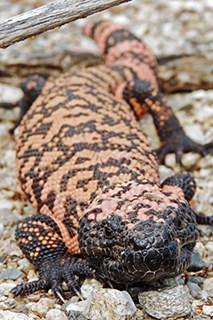
NPS Photo
Saguaro National Park (AZ) Gila Monster Repeat Photography Project
- Purpose: Monitor the park's Gila monster life spans, behaviors, and distribution to help scientists and managers understand this key reptile.
- Activities: Use a smart phone camera to photograph Gila monsters encountered while hiking, running, cycling, or driving in the park. Email the photos to the project team and receive feedback on what is known about each individual lizard.
- Location & Timing: Participate in the park; Every year, March-October.
- Requirements: Anyone 13 or older can participate by taking and emailing photographs. No special training is needed.
- To Participate: Follow guidance on the project website.
- More Information: Project website or email the project coordinator.
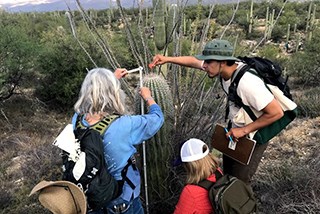
NPS Photo
Saguaro National Park (AZ) Saguaro Census
- Purpose: Monitor the size, demographics, and trends in the iconic saguaro cactus population.
- Activities: Measure cacti and record data (height, location, number of arms and bird holes) in established plots throughout the park.
- Location & Timing: Participate in the park; every 10 years during October to April.
- Requirements: Anyone can participate, young children must be supervised by adults; training is provided. Volunteers must be able to hike and work for several hours in desert heat.
- To Participate: Email the project coordinator
- More Information: Project website
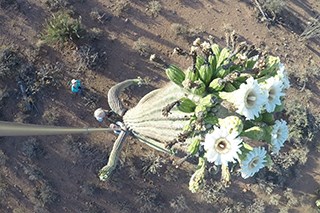
NPS Photo
Saguaro National Park (AZ) Saguaro Flower Power Phenology Project
- Purpose: Learn about the timing of saguaro cactus flowers and fruit production and how it may be changing.
- Activities: Use a giant selfie stick to photograph buds, flowers, and fruit at the top of saguaro cacti.
- Location & Timing: Participate in the park; April-July.
- Requirements: Adults can participate; training is provided. Volunteers must be comfortable working in the desert heat.
- To Participate: Email the program coordinator. Only a limited number of participants are accepted -- typically local residents who can volunteer for longer periods of time.
- More Information: Project website
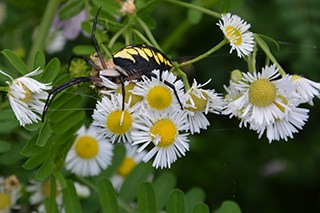
NPS Photo
Saugus Iron Works National Historic Site (MA) Biodiversity Project
- Purpose: Document the biodiversity of Saugus Iron Works National Historic Site so park managers understand what lives there.
- Activities: Identify and upload photographs of species using the mobile app iNaturalist.
- Location & Timing: Participate on site or remotely (online); year-round.
- Requirements: Anyone can participate. Volunteers need to have a mobile device and be familiar with the iNaturalist application.
- To Participate: All iNaturalist users who post observations within park boundaries, or identify entries within the park, are automatically included in the Saugus Iron Works iNaturalist project.
- More Information: iNaturalist website or email the park coordinator.
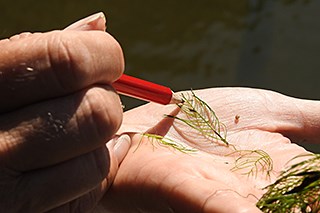
NPS Photo
St. Croix National Scenic Riverway (MN/WI) Algae Alert Network
- Purpose: Determine where and when harmful algae grow in the river so managers can understand threats to the ecosystem and public safety.
- Activities: Collect water samples and other data from fixed locations along the river.
- Location & Timing: Participate in the park, annually mid-July to early October.
- Requirements: Must be an adult; training is provided.
- To Participate: Sign up online
- More Information: Project article
* Paperwork Reduction and Privacy Act Statement: The National Park Service is authorized by 16 U.S.C. 1a-7 to collect this information. This information collection will provide data for the National Park Service to better understand which species occur on its lands and where those species occur. Response to this request is voluntary. No action may be taken against you for refusing to supply the information requested. The permanent data will be anonymous. An agency may not conduct or sponsor, and a person is not required to respond to a collection of information unless it displays a currently valid OMB control number.
BURDEN ESTIMATE: Public reporting burden for this form is estimated to average 5 minutes per response. Direct comments regarding the burden estimate or any other aspect of this form to NPS Information Collection Clearance Officer (NPS_ICR@nps.gov)
OMB Control Number: 1024-0275
BURDEN ESTIMATE: Public reporting burden for this form is estimated to average 5 minutes per response. Direct comments regarding the burden estimate or any other aspect of this form to NPS Information Collection Clearance Officer (NPS_ICR@nps.gov)
OMB Control Number: 1024-0275
Last updated: April 13, 2023
